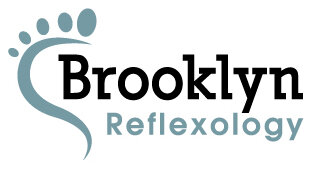Knowing the major muscle groups (Pt4)
This month we’ll continue on with another set of important muscles located in the front of the body.
Abdominals: Nowadays so much focus is placed on strengthening our core and sculpting those “washboard abs”. The advantage of having a well toned midsection however goes much deeper than that sought after look. Stronger abdominals will mean better support for the spine and back, which can in turn lead to a better overall posture.
The abdominals are comprised of four individual pairs of layered muscle. They work together to help flex, twist, and side bend the torso.
Rectus Abdominis: The most central and superficial layer of the abdominals. Rectus Admoninis runs vertically down the mid section. Its segmented muscle fibers are what give you the washboard look. It originates on the pubic bone and attaches below the sternum to the 5th-7thribs.
External Oblique: The next layer beneath Rectus Abdominis is the External Oblique. Originating along the side of the torso and the lower eight ribs, it runs down at an angle to attach to the front the pelvic bone. The External Oblique, unlike Rectus Abdominis, is a broad and flat segment of the abdominals.
Internal Oblique: This thin segment lies deep and perpendicular to the External Oblique. It originates along the front of the pelvic bone and attaches to the lower three ribs and its surrounding fascia.
Transverse Abdominis: As the deepest layer of the abdominals, the Transverse Abdominis runs horizontally across the midsection. It originates along part of the hip bone, the lower six ribs, and surrounding fascia to attach along the midsection line known as the Linea Alba.
Rectus Abdominis External Oblique Internal Oblique Transverse Abdominis
This unique criss-crossing configuration provides plenty of support for the spine and the organs of the abdominal cavity. The abdominals are instrumental in both normal and forced exhalation and provide plenty of exerting power in actions such as vomiting, defecation, and urination.
Quadratus Lumborum: Often referred to as the Q.L., this muscle is considered by many to be a low back muscle when in reality it’s one of the deepest muscles in the abdomen. The muscle originates along the back of the hip bone and attaches itself to four of the five lumbar vertebrae and the 12th rib. Q.L. is also known as a “hip hiker” muscle for its ability to lift or tilt the pelvis side to side. Its other actions include extension of the spine, and aiding in forced exhalation.
Psoas: This deep hip flexor muscle is often referred to as the Iliopsoas. The reason for this, is that part of its muscle fibers blend with another muscle that lines the inner side of the pelvic bone called Iliacus. Since both perform virtually the same function, they’re often referred to together.
The Psoas lies deep to the viscera of the abdomen. It originates along the lumbar spine and travels down to the pelvis where it blends with Iliacus. From there the two muscles descend past the groin to attach on the inner part of the femur.
The main actions of the Psoas are to flex the hip, laterally rotate the hip (turn leg outward), and adduct the hip (bring leg in, closer to the body). It also helps to raise the upper body into a seated position when lying down. The Psoas is a major player in stabilizing the hips and the low back and is an often an overlooked cause of low back pain when trigger points are involved. If you have pain or difficulty standing up straight, the Psoas may be to blame.
Quadriceps: As the name implies, the Quadriceps are made up of four individual heads which cover the front, outer, and part of the inside of the upper leg. They’re the biggest and most powerful muscle in the human body. Their main function is knee extension. The bulgy part of the muscle that runs down the front of the thigh is known as Rectus Femoris. The other three heads are named for their position in relation to the femur. Vastus Lateralis covers the lateral or outer part of the thigh. Vastus Medialis covers the medial or inner part of the thigh. And Vastus Intermedius, the deepest layer of the Quads, lies beneath the other three heads.
The Quad, namely Rectus Femoris, is also capable of hip flexion. Anatomically however, Rectus Femoris is the only head of the Qaud to cross the hip joint. The other three heads originate on the femur but do not actually cross the hip joint. All four heads however converge into one tendon to cross over the knee joint.






